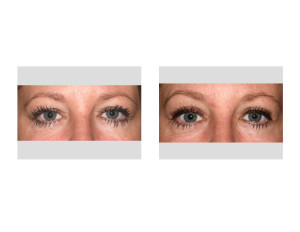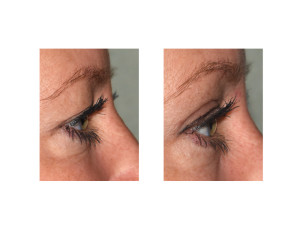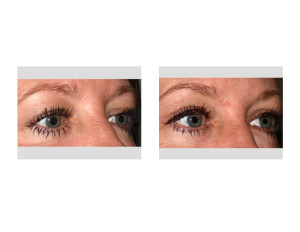Background: Upper blepharoplasty surgery, more commonly known as an eyelid lift, is the most common cosmetic eyelid surgery. It is tremendously effective and is associated with a very low risk of complications. While eyelid tissue is very thin and swells significantly after surgical manipulation, the recovery is fairly quick. The results of blepharoplasty surgery is sustained for years although its results are not permanent.
Blepharoplasty surgery is commonly done as part of other aesthetic facial surgeries such as facelifts and browlifts. As a result the swelling and bruising is seen as significant in the context of the overall face and the recovery is comparatively prolonged. But this composite facial rejuvenative surgery belies the otherwise relative ‘simplicity’ of the upper blepharoplasty procedure.
The upper blepharoplasty procedure relies on skin and some orbicularis muscle removal to create its effect. There is a debate as to whether any muscle should be removed along with the skin removal and its effect is primarily believed to help redefine the upper eyelid crease. Proper marking and not excessive tissue removal are the keys to an uncomplicated and satisfactory upper eyelid lift.
Because the upper eyelid is a small structure with thin tissues it can be fairly easily anesthetized by local anesthesia injections. Since the surgery can be done with the surgeon standing above or to the side of the patient and with the upper eyelid closed, the surgery can be performed out of the patient’s field of vision. This further promotes patient comfort.
Case Study: This 42 year old female felt her upper eyes were getting tired and heavy. She felt she had developed some hooding of skin that no amount of eyelid creams or Botox injections around the eyelids could solve.


An isolated upper blepharoplasty can be comfortably and safely performed under local anesthesia in the office. Its effects are immediate and the recovery is very short. Such an office procedure provides the most economic approach to having an upper eyelid lift done.
Highlights:
1) The upper blepharoplasties (eyelid lift) improves upper eyelid shape by removing hooding and redefining the upper eyelid crease.
2) An isolated upper blepharoplasty can be safely and comfortably performed under local anesthesia as an office procedure.
3) An upper blepharoplasty has a quick recovery with only moderate swelling and bruising.
Dr. Barry Eppley
Indianapolis, Indiana



